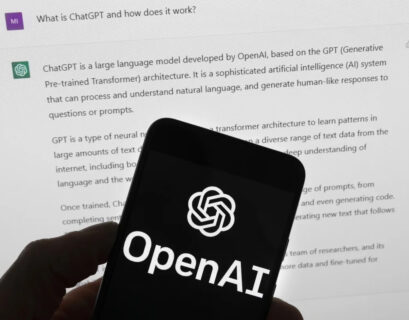Historically, cyber assaults were labor-intensive, meticulously planned, and required extensive manual research. However, the emergence of AI has empowered threat actors to conduct attacks with remarkable efficiency and potency. This technological shift allows them to carry out more intricate, harder-to-detect attacks on a larger scale. They can also manipulate machine learning algorithms to disrupt operations or compromise sensitive data, thereby amplifying the impact of their illicit activities.
Malicious actors are increasingly leveraging AI to analyze and optimize their attack strategies, significantly boosting their chances of success. These AI-driven attacks are known for their stealthy and unpredictable nature, enabling them to bypass traditional security measures that rely on fixed rules and historical attack data. According to the 2023 Global Chief Information Security Officer (CISO) Survey by search firm Heidrick & Struggles, AI has emerged as the most widely recognized significant threat expected in the next five years. Consequently, organizations must prioritize raising awareness about these AI-enabled cyber threats and bolstering their defenses accordingly.
Characteristics of AI-powered cyberattacks
AI-driven cyberattacks showcase the following traits:
- Automated Target Profiling: AI simplifies attack research by utilizing data analytics and machine learning to efficiently profile targets, extracting information from public records, social media, and company websites.
- Efficient Information Gathering: AI speeds up the reconnaissance phase, the initial active step in an attack, by automating target searches across various online platforms, enhancing efficiency.
- Personalized Attacks: AI analyzes data to craft personalized phishing messages with precision, increasing the chances of successful deception.
- Employee Targeting: AI identifies crucial personnel within organizations who have access to sensitive information.
- Reinforcement Learning: AI employs reinforcement learning for real-time adaptation and continuous enhancement in attacks, adjusting strategies based on past interactions to remain agile and improve success rates while outmaneuvering security defenses.
Types of AI-facilitated cyberattacks
Advanced phishing tactics
A recent report from cybersecurity firm SlashNext reveals alarming statistics: since Q4 2022, malicious phishing emails have surged by 1,265%, with credential phishing witnessing a 967% spike. Cybercriminals are leveraging generative AI tools like ChatGPT to create highly targeted and sophisticated Business Email Compromise (BEC) and phishing messages.
Gone are the days of poorly crafted “Prince of Nigeria” emails in broken English. Presently, phishing emails are incredibly convincing, mirroring the tone and structure of official communications from trusted sources. Threat actors utilize AI to compose highly persuasive emails, posing a challenge in discerning their authenticity.
To safeguard against AI-driven phishing attacks:
- Deploy advanced email filtering and anti-phishing software to identify and block suspicious emails.
- Educate employees on recognizing phishing cues and conduct regular phishing awareness training.
- Enforce multi-factor authentication and ensure software is consistently updated to mitigate known vulnerabilities.
Advanced social manipulation assaults
AI-generated social engineering attacks entail the manipulation and deceit of individuals through AI algorithms to create convincing personas, messages, or scenarios. These methods exploit psychological principles to influence targets into divulging sensitive information or carrying out specific actions.
Instances of AI-generated social engineering attacks include:
- AI-powered chatbots or virtual assistants that engage in human-like interactions to gather sensitive information or manipulate behavior.
- AI-driven deepfake technology poses a significant threat by generating authentic audio and video content for impersonation and disinformation campaigns. By utilizing AI voice synthesis tools, malicious actors can mimic a target’s voice accurately, facilitating deception in various scenarios.
- Social media manipulation through AI-generated profiles or automated bots disseminating propaganda, fake news, or malicious links.
Strategies to counter AI social engineering attacks:
- Advanced Threat Detection: Implement AI-powered threat detection systems capable of identifying patterns indicative of social engineering attacks.
- Email Filtering and Anti-Phishing Tools: Employ AI-powered solutions to thwart malicious emails before reaching users’ inboxes.
- Multi-Factor Authentication (MFA): Introduce MFA to add an extra layer of security against unauthorized access.
- Employee Training and Security Awareness Programs: Educate employees to identify and report social engineering tactics, including AI-enabled techniques, through ongoing awareness campaigns and training sessions.
Ransomware offensives
The NCSC assessment scrutinizes AI’s impact on cyber operations and the evolving threat landscape over the next two years. It underscores how AI diminishes barriers for novice cybercriminals, hackers-for-hire, and hacktivists, enhancing access and information-gathering capabilities. Threat actors, including ransomware groups, are already leveraging this increased efficiency in various cyber operations such as reconnaissance, phishing, and coding. These trends are anticipated to persist beyond 2025.
To defend against AI-driven ransomware attacks:
- Advanced Threat Detection: Utilize AI-powered systems to detect ransomware patterns and anomalies in network activity.
- Network Segmentation: Segment the network to contain the spread of ransomware.
- Backup and Recovery: Regularly back up critical data and verify restoration procedures.
- Patch Management: Keep systems up to date to address vulnerabilities exploited by ransomware.
Adversarial AI
Evasion and poisoning attacks represent two adversarial attack types concerning artificial intelligence (AI) and machine learning (ML) models.
Poisoning Attacks: These involve injecting malicious data into the training dataset of an AI or ML model to manipulate the model’s behavior subtly. By introducing poisoned data during training, attackers can compromise the model’s integrity and performance.
Evasion Attacks: These aim to deceive a machine-learning model by crafting input data to alter the model’s prediction subtly. These adjustments are designed to remain visually imperceptible to humans, causing the model to misclassify the data.
Defense strategies against adversarial AI:
- Adversarial Training: Train the model to recognize adversarial examples using available tools for automatic discovery.
- Switching Models: Employ multiple random models for predictions, making it challenging for attackers as they are unaware of the current model in use.
- Generalized Models: Combine multiple models to create a generalized model, making it difficult for threat actors to deceive all of them.
- Responsible AI: Utilize responsible AI frameworks to address unique security vulnerabilities in machine learning.
Malicious GPTs
Malicious GPTs involve manipulating Generative Pre-trained Transformers (GPTs) for offensive purposes, exploiting their extensive cyber threat intelligence. Custom GPTs, leveraging vast datasets, can potentially bypass existing security systems, ushering in a new era of adaptive and evasive AI-generated threats. It is important to note that these are currently theoretical and have not been observed in active use at the time of this writing.
- WormGPT: Used for generating fraudulent emails, hate speech, distributing malware, and aiding cybercriminals in executing Business Email Compromise (BEC) attacks.
- FraudGPT: Capable of generating undetectable malware, phishing pages, undisclosed hacking tools, identifying leaks and vulnerabilities, and performing additional functions.
- PoisonGPT: Designed to propagate online misinformation by injecting false details into historical events, enabling malicious actors to distort reality and influence public perception.
Conclusion
AI-driven attacks present a significant threat, capable of causing widespread harm and disruption. To counter these threats, organizations should invest in defensive AI technologies, cultivate a culture of security awareness, and continuously update their defense strategies. By remaining vigilant and proactive, organizations can better shield themselves against this evolving threat landscape.
Editor’s Note: The opinions expressed in this guest author article are solely those of the contributor and do not necessarily reflect those of Tripwire.









